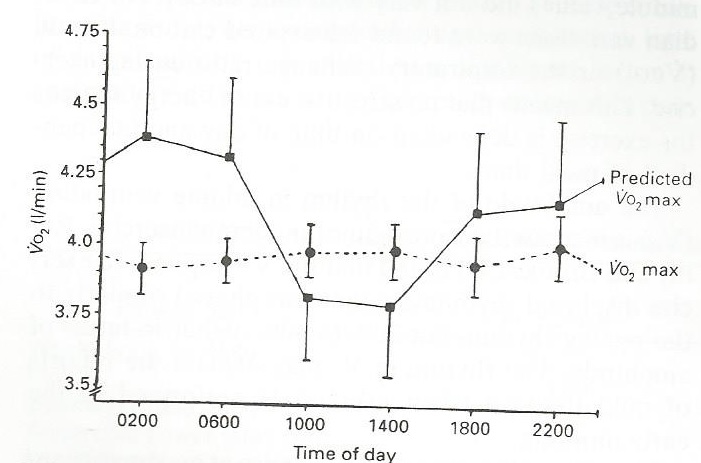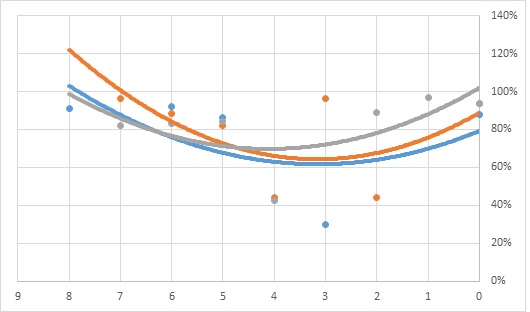The Impact of Travel on Performance
Alan Couzens, MS (Sports Science)
Nov 11th, 2014

So far in 2014, the Iron Gods haven’t been smiling favorably on my squad. It is a peculiar phenomenon but it seems that both good luck and bad luck come in batches. Last year was a bad luck year on the training side – I had athletes falling off their bikes in quick succession, picking up weird bugs & overall having a tough go of things, only to be rewarded with surprisingly strong race results. This year was the polar opposite – I had a group of athletes put together perfect builds to arrive at, honestly, ridiculous levels of fitness for age group competitors, only to have their race day performances thwarted by factors that were near impossible to predict or control.
Madame Pele was one of the Gods who seemed particularly annoyed at me for some reason this year. She opened a big gap between ‘normal’ v ‘front of the pack swimmers, turned on the winds early in the bike to widen this gap then instructed the bulk of the AG field to ride with their heads down on a Kamikaze mission centered around anyone who might be coached by me. Needless to say, rear wheels, rear derailleurs and bike splits were the obvious casualties.
Such questionable ethics/kamikaze intent of other riders or shifts in the island weather definitely fall on the ‘tough to predict’/’impossible to control’ end of the spectrum. However, my frustration at this year’s results got me on the hunt for other possible factors in underperformance that we may be able to control & I might have uncovered something on this front….
While 2014 falls to the extreme end of the ‘bad luck scale', underperformance on the Island across the board is pretty common. Athletes new to the race are usually surprised by the gap between what they have executed in training or previous races and what they are able to execute in Kona. This is a relatively universal phenomenon. A part of this is, no doubt, due to the harsh climate that Kona provides. However, this is something that we can predict, control and prepare for in the form of heat camps in equally environmentally challenging places such as Southern Spain or the Canary Islands. However, even when I compare athletes performances in these camps to Kona, there is often still a delta. So, what represents the balance of this gap?
What is unique about Kona? Sure, all of those factors that we’ve mentioned so far – heat, wind, lava, the pressure & hype that comes with the World Championship Venue.. but there is one more factor that makes it quite unique – take a look at a map: Hawaii is pretty removed from, well, everywhere. Certainly from most of the population centers that athletes will be travelling in from. Many athletes will be crossing significantly more time zones for this race than others on the calendar. This represents an additional, very significant, challenge to performance.
The source of this physiological challenge is the natural circadian rhythm of the athlete. An athlete’s performance can vary a surprising amount over the course of a day. Several studies have shown this… flexibility (Reilly et al.,1997), strength (Coldwells et al.,1993), power (Reilly & Down, 1992) and submax endurance (Atkinson et al.,1993) can all vary 5-10% or more depending on where the timing of the event/test lies within the context of the athletes’ normal circadian rhythm.
In the specific context of submaximal aerobic performance, a neat study looked at how estimated VO2 via submax HR for a fixed workload varied over the course of the day (Reilly, 1987). This is shown on the chart below…

Depending on the time of day when the test was performed, the athlete's aerobic capacity could literally move from ‘front of the pack’ numbers to ‘middle of the pack’ numbers. It’s not uncommon to see this gap bear out in races that most throw an athlete from their natural body clock.
The problem, of course, with events that are far removed from our own time zone, is that they often occur at the ‘low point’ in our natural circadian rhythm, when daily performance potential is at its lowest. Over time, the athletes natural circadian rhythm will become ‘in tune’ with the rhythm of his/her race venue, but it takes time.
"Just how much time it takes for performance to recover to 'normal', has also been the subject of some research. In a study on performance measures in Rugby Players (Reilly & Mellor, 1988), it was found that the time for performance measures to recover to normal ‘home’ numbers was (on average) in line with the ‘1 day for every time zone crossed' rule"
This rule would also seem applicable from the power/HR data from 3 of my own athletes from Kona this year, shown below – 2 travelling from the UK (11 time zones) and 1 from Australia (6 time zones).

All travelled in 9 days prior to the race. Numbers are shown in comparison to their average power:HR numbers from the preceding month of training at home. As you can see, all exhibited a significant drop from arrival to the 5th-7th day after arrival (where numbers were significantly low) followed by a recovery in the 8th, 9th & 10th day after arrival. The Australian recovered power:HR numbers almost back to training numbers, while the UK athletes who were still not at normal numbers 9 days after arrival. In fact, numbers for one athlete were averaging 20% low for a given HR. For my athletes from the U.K. we could have certainly benefited from (and will plan!) an extra 2-3 days to acclimatize at the race venue.
It should be noted that in both the study I referenced above and my own experience, no particular interventions were used/advised. Some of the interventions that have seen support in the literature include…
- Pre-adaptation – When travelling West to East, attempt to go to bed 1-2 hrs earlier and wake up 1-2hrs earlier than normal. This is more effective when combined with other strategies mentioned below.
- Bright light exposure/exercise – Time bright light exposure and exercise in accordance with target destination. Minimize both of these during times that you would be sleeping at target destination.
- Nutritional therapy – Adjust nutritional schedule in accordance with target destination. Focus on high CHO meals for dinner* and higher protein for breakfast*. (* that meal time at your race venue)
- Drugs/supplements – While not an effective long term strategy, consider the use of short acting sleeping pills during the flight if it occurs during your target sleep time & you have trouble sleeping on planes. Also consider the use of melatonin capsules in the lead up to travel as you are trying to adjust your body clock. Finally, limit caffeine intake at times that you'll be sleeping at your target destination
Though the above may slightly speed up the process, unless you want to become a shift worker for a couple of weeks before your event, there are limits :-) It will still take a significant amount of plain old time to adapt your rhythm to that of your environment. This is something to consider and plan for when booking flights to your next key event.
Travel smart,
AC
Tweet**************************
Don't miss a post! Sign up for my mailing list to get notified of all new content.
**************************
